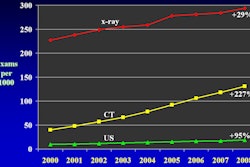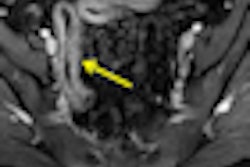Nearly 35% of all the imaging costs from 2,068 orthopedic patient encounters in Pennsylvania were ordered for "defensive imaging" purposes, according to a new study presented Wednesday at the American Academy of Orthopaedic Surgeons (AAOS) meeting in San Diego.
Defensive imaging is the practice of ordering diagnostic procedures that may be of little or no benefit to the patient, in order to protect physicians from lawsuits. It is widely practiced but has not been measured, according to the study's lead author, John Flynn, MD, associate chief of orthopedic surgery at Children's Hospital of Philadelphia.
"Defensive medicine is ubiquitous, but poorly understood," Flynn and colleagues wrote. "Our study was designed to prospectively capture and analyze the current rate and cost of defensive imaging among orthopedists in a single state."
Seventy-two members of the Pennsylvania Orthopedic Society participated in the study. They were asked to anonymously record a consecutive series of patient imaging decisions in any setting -- whether clinic, emergency department, or inpatient. The orthopedists were asked to record their demographic information and the modality, region, and indication for each order, the study team wrote.
Defensive imaging constituted 324 of 1,642 (19%) orders recorded by 56 orthopedists, the researchers found, with MRI exams accounting for 161 (50%) of defensive orders.
By modality, Flynn and colleagues found defensive imaging accounted for the following:
- Radiographs: 128 of 1,119 total orders, or 11%
- MRIs: 161 of 425 total orders, or 38%
- CT scans: 13 of 40 total orders, or 33%
- Bone scans: 13 of 23 total orders, or 57%
- Ultrasounds: 9 of 17 total orders, or 53%
In the end, defensive imaging racked up costs of $113,369, or about 35%, of total imaging charges of $325,309, based on Medicare dollars. In particular, defensive MRIs were responsible for 86% of defensive imaging costs and 30% of total costs.
The study also found the incidence of defensive imaging orders rose among doctors who underwent lawsuits within the last five years and who have practiced more than 15 years -- a counterintuitive finding, according to Flynn. At least in Pennsylvania, rather than younger doctors practicing more defensive medicine because they are less confident of their experience, it is older doctors whose defensive nature worsens over time, Flynn said in a statement released by the AAOS.
"Ultimately, if you had doctors from multiple specialties -- from ob/gyn to neurosurgery to emergency medicine -- do this type of practice audit, you could accurately quantify how much of our nation's healthcare resources are wasted on defensive medicine," Flynn said.
By Kate Madden Yee
AuntMinnie.com staff writer
February 17, 2011




.fFmgij6Hin.png?auto=compress%2Cformat&fit=crop&h=100&q=70&w=100)




.fFmgij6Hin.png?auto=compress%2Cformat&fit=crop&h=167&q=70&w=250)











